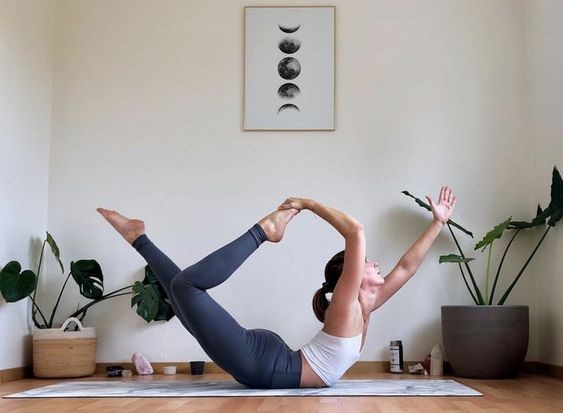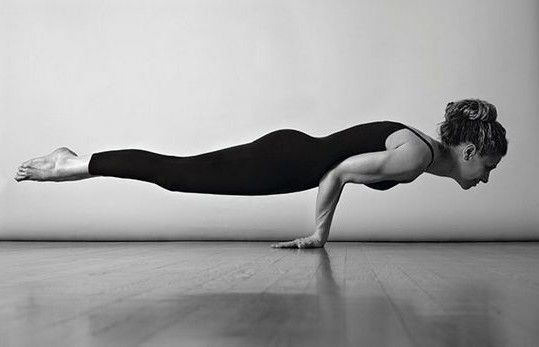Forget all the fitness trends that come and go – yoga has stood the test of time for over 5,000 years! In today’s fast-paced world, it’s no wonder this mind-body practice has become so popular! The word “yoga” itself comes from Sanskrit, an ancient Indian language, and means “to yoke or join together.” This perfectly captures the essence of yoga: uniting your mind, body, and spirit.
Unlike a typical workout, yoga offers a holistic approach to well-being. It benefits both your body and mind, and the best part is there’s a style for everyone! From gentle and restorative poses to more intense and sweaty flows, you can find a practice that suits your needs. While yoga has cultural and spiritual roots, its health benefits are widely recognized today. Everyone, from celebrities to athletes, incorporates yoga into their routines to improve flexibility, recovery time, and mental well-being. No matter your beliefs or lifestyle, yoga can be a powerful tool for feeling your best.
What is Yoga?
Yoga is an ancient practice with roots in India that goes far beyond just exercise. For thousands of years, people have used yoga to find peace of mind and a deeper understanding of themselves. The Sanskrit phrase “Yogachittavritti Nirodha” describes the true goal of yoga: calming the mind to achieve inner peace and self-discovery. It might sound serious, but that’s the beauty of yoga – it works on many levels. While it helps your body feel great, it can also reach deeper, healing your mind and spirit.
Hatha Yoga: A Popular Introduction
In the West, hatha yoga is one of the most common types of yoga practiced. It combines three key elements: physical postures (called asanas), controlled breathing techniques (pranayama) done with the postures, and meditation (dhyana) to bring about peace and relaxation.
The Many Perks of Yoga

Ever wonder why more and more people are turning to yoga? Let’s explore some amazing benefits it can bring to your life!
1. Say Morning Stiffness Goodbye
Yoga poses, also called asanas, are like gentle stretches for your body. Doing yoga in the morning can help loosen up tight muscles and joints, making you feel less stiff and more energized throughout the day. Think of it like this: when you sleep, your muscles rest, and fluids can build up around them, causing stiffness. Regular morning yoga helps release these fluids and gets your blood flowing smoothly, leaving you feeling refreshed and ready to take on the day. If you skip stretching or exercise, these fluids can thicken and cause even more stiffness, leading to tight muscles and achy joints.
2. Helps you Sleep Tight
We all know sleep is crucial. It’s when our body repairs itself, our brain recharges, and our immune system gets a boost. But many of us struggle with sleep issues like insomnia or just not getting enough quality shut-eye. This lack of sleep can lead to a whole host of problems, from heart disease to diabetes. Here’s the good news: yoga can be a powerful tool for better sleep! Certain yoga poses, like Child’s Pose, Forward Fold, and Corpse Pose, along with breathing exercises like the Bee Breath, can all help you drift off to dreamland faster and sleep more soundly.
3. Resolves Breathing Issues
Do you ever feel winded during exercise? This can be incredibly frustrating for people with breathing difficulties. But yoga could be your answer! Unlike some intense workouts, yoga is gentle and low-impact, making it accessible to all fitness levels. This makes it an excellent option for those who struggle with breathing issues like asthma. Yoga strengthens your respiratory muscles and increases your lung capacity by focusing on deep, mindful breathing techniques. Certain poses can also help open up your chest and improve posture, leading to better breathing.
4. Improves Flexibility
One of the first things you might notice with yoga is how much more flexible you become. Whether you dream of touching your toes, loosening up tight hamstrings, or just feeling less stiff overall, yoga poses and stretches can help you achieve that. As your muscles get more flexible and stronger, you’ll be less likely to get hurt and have more freedom of movement, making everyday activities easier.
5. Helps With Posture
Studies show that yoga exercises can work wonders on your posture. Good posture is key to staying healthy throughout your life. Think of your spine as the central highway for your nervous system. When your spine is healthy and aligned, those information highways are clear and strong, allowing energy to flow freely. Plus, correcting posture imbalances can help prevent and even relieve chronic back pain.
6. Boosts Strength
The beauty of yoga is that it works your entire body. It might not feel as intense as some high-impact workouts, but holding those poses can be challenging, especially as you progress to more advanced postures like headstands. By starting with basic poses and gradually moving to more challenging ones, you’ll build strength in your arms, legs, and core. This is a fantastic way to add strength training to your routine without relying on weights – yoga uses your body weight for resistance. As you improve and try more difficult poses, you’ll push your body harder and get even stronger.
7. Not Less Than A Cardio Workout
One of the biggest myths about yoga is that it’s slow and boring, just for older folks. Not a chance! Yoga can be as intense as you want it to be. It can be a heart-pumping cardio workout, help you build strength and tone your muscles, improve flexibility and agility, and even aid in weight loss – without fancy equipment.
8. Protects Your Spine
Your spine is like a shock absorber, keeping you upright and cushioning your body when you move. The discs between your vertebrae need a steady flow of nutrients to stay healthy. Yoga poses like twists, backbends, and forward folds help exercise your spine, keeping those discs healthy and flexible. This can even be helpful for people with conditions like Multiple Sclerosis, potentially easing pain and slowing down degeneration, not curing it
9. Boosts Your Circulation
Do you ever suffer from cold hands and feet? That could be a sign of poor circulation. Here’s where those yoga poses (asanas) you’ll learn come in handy! Remember how we talked about “Prana”? It’s like the body’s vital energy or life force; there’s nothing more life-giving than good blood flow. Yoga poses help circulation in two ways:
Squeezing and Releasing: Certain poses squeeze and release muscles, creating a kind of internal “pump” that pushes blood around your body, restoring healthy blood flow.
Gravity Assist: Inverted poses (like headstands) use gravity to help move blood to different areas. When you’re upside down, the blood in your legs naturally flows back to your heart.
Why is good circulation important? Blood travels through your lungs to pick up oxygen. The more efficient your circulation, the more oxygenated blood reaches all your cells, making you feel more energized. Exercise also helps increase hemoglobin levels and red blood cell production, making your body even better at transporting oxygen throughout your system.
10. Refines Digestion
Our modern diets and stressful lives can wreak havoc on our digestive systems. Luckily, exercise like yoga can help! Yoga can prevent constipation and keep things moving smoothly by speeding up how food moves through your gut. Plus, the stress-relieving benefits of yoga can also calm an upset stomach. Conditions like Irritable Bowel Syndrome (IBS) and ulcers can worsen with stress, and yoga can be a great way to combat that.
11. Lowers Blood Pressure
High blood pressure puts you at risk for cardiovascular disease, which can lead to strokes and heart attacks. By relieving stress, yoga naturally helps to lower blood pressure. Yoga can improve circulation and even lower cholesterol levels. This helps prevent plaque buildup in your veins and keeps them more flexible, ultimately reducing overall blood pressure.
There’s even research (look up the “Lifestyle modification and blood pressure study”) that shows a slight drop in blood pressure can significantly reduce the risk of heart disease and stroke!
12. Fights Depression
Yoga isn’t just about stretching and moving your body. It also helps you focus your mind. As you learn new poses, you’ll need to concentrate on your breath and how your body moves. This focus also translates off the yoga mat, helping you concentrate better on your daily tasks.
13. Sharpens Your Focus
Studies show that yoga exercises can work wonders on your posture. Good posture is key to staying healthy throughout your life. Think of your spine as the central highway for your nervous system. When your spine is healthy and aligned, those information highways are clear and strong, allowing energy to flow freely. Plus, correcting posture imbalances can help prevent and even relieve chronic back pain.
14. Boosts Strength
The beauty of yoga is that it works your entire body. It might not feel as intense as some high-impact workouts, but holding those poses can be challenging, especially as you progress to more advanced postures like headstands. By starting with basic poses and gradually moving to more challenging ones, you’ll build strength in your arms, legs, and core. This is a fantastic way to add strength training to your routine without relying on weights – yoga uses your body weight for resistance. As you improve and try more difficult poses, you’ll push your body harder and get even stronger.
15. Not Less Than A Cardio Workout
One of the biggest myths about yoga is that it’s slow and boring, just for older folks. Not a chance! Yoga can be as intense as you want it to be. It can be a heart-pumping cardio workout, help you build strength and tone your muscles, improve flexibility and agility, and even aid in weight loss – without fancy equipment.
16. De-Stress Your Mind
Our busy lives can be overwhelming, making it challenging to relax and feel calm. This constant stress can lead to anxiety. Yoga can be a great way to combat this. Yogic breathing exercises (pranayama) and other breathing techniques are some of the best ways to unwind and relax your mind.
17. Balances Your Hormones
Women’s bodies experience hormonal changes throughout their lives. From periods to pregnancy and menopause, these fluctuations can bring a range of challenges. Thankfully, regular yoga can help balance your hormones, making symptoms related to menstruation, menopause, and other imbalances more manageable. For example, studies show yoga can significantly reduce premenstrual syndrome (PMS) symptoms like mood swings, bloating, and skin problems.
18. Releases Happy Hormones
Ever feel like you’re on an emotional rollercoaster? Tiny hormones in your body called dopamine and endorphins are partly responsible for your mood swings. Studies show that morning meditation can boost your production of these “happy hormones,” leading to a more positive and productive day. With its focus on mindfulness, yoga can be a form of meditation so that you might experience similar benefits!
19. Relieves menstrual pain
Many women experience painful cramps during their periods. If that’s you, certain yoga poses can offer relief by improving blood flow to your abdominal muscles. Plus, the meditative aspects of yoga can help distract your mind and ease discomfort.
20. No more Back Pains
Struggling with back pain? Yoga can be your secret weapon! Consistent practice of the proper yoga poses can help with multiple back issues, from slipped discs and weak muscles to lower back pain. Yoga poses (asanas) help keep your back flexible and strong, improve your posture, and boost stability, leading to a healthier spine.
21. Relieve Neck Pain
In today’s digital world, we spend much time hunched over computers and phones, leading to bad posture and neck strain. This can cause problems like cervical spondylosis (painful neck condition). Simple yoga poses and stretches can help treat these issues by strengthening your neck muscles, improving your posture, and preventing future weakness.
22. Detoxify Your Body
Looking to cleanse your digestive system and get rid of toxins? Look no further than yoga! Yogic cleansing techniques (kriyas) like Vaman (therapeutic vomiting), Laghoo Shankprakshalan (internal cleansing), and Agnisaar (abdominal massage) can help massage your intestines and eliminate waste products. Specific yoga poses like Forward Fold variations, Marichyasana twists, and Revolved Chair Poses can also aid in detoxification.
23. Regulate Thyroid Function
Several studies suggest that yoga can have a positive impact on thyroid function. Ujjayi breathing (victorious breath) along with poses like Bridge Pose, Shoulderstand, Plow Pose, Fish Pose, and Legs-Up-the-Wall Pose can all help regulate thyroid function, potentially aiding in the treatment and prevention of both hyperthyroidism and hypothyroidism
24. A Natural Ally Against Diabetes
Diabetes is a growing health concern worldwide. Yoga practices like breathing exercises (pranayama) and twisting postures can help! These techniques can improve digestion and potentially lower blood sugar levels, reducing your risk of developing diabetes and its complications.
25. Less Reliance on Medication
We’re not saying to ditch your meds right away. But over time, as you get healthier with yoga, you might need less medication. Stress levels can go down, and your body’s systems can start to work better together. Many lifestyle diseases, like diabetes, can even be reversed with healthy habits. Yoga could be a great first step on that journey! Imagine feeling better and potentially saving money on medication!
The Final Note

So, is yoga a magic bullet for perfect health? Not quite. While yoga classes can make you feel better and healthier, they’re not a one-stop shop. If you have a terrible diet and smoke like a chimney, an hour of yoga a week isn’t going to erase all that. It’s like indulging in a giant unhealthy meal and expecting an hour on the treadmill to fix everything.
Yoga is a great start for those with an unhealthy lifestyle, but other changes are needed to see the full benefits. The beauty of yoga is that you can ease into it. Start with beginner-friendly Hatha yoga or gentle restorative poses, and gradually progress to more challenging workouts.
Here’s where yoga truly shines, it has a powerful, calming mental effect. You might begin by simply taking a class without making other changes. But over time, you might find yourself naturally drawn to healthier choices and a more balanced diet. Yoga can be the nudge you need to move towards a healthier you!
